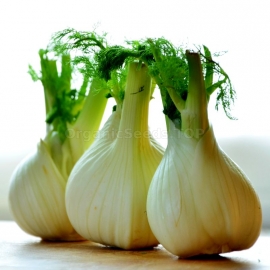






«Zephyr» - Organic Fennel Seeds
1.14 €
A very handsome plant in the garden with its graceful, feathery foliage and, later on, an extraordinary white bulb-like stem. Both foliage and stem are sweetly fragrant, with a delicate aniseed flavour.
-
Organic Fennel «Zephyr»
A very handsome plant in the garden with its graceful, feathery foliage and, later on, an extraordinary white bulb-like stem.
Both foliage and stem are sweetly fragrant, with a delicate aniseed flavour: pick the leaves earlier in the season for flavouring fish dishes, and try the stem very finely sliced into a salad with orange and watercress.
How to Grow
In addition to providing aromatic seeds and foliage, dill will brighten your garden with its yellow-green flowers in spring and fall. While typical dill grows to a height of 2 to 4 feet, Fernleaf dill is more compact, growing only 18 to 24 inches tall. It is a warm-season annual, but really loves mild weather–not too hot, not too cold. With its slender stem and delicate leaves, it makes a good mid- to back-of-the-border addition to your garden. Try growing dill in a spot where it can easily reseed.
Dill likes direct sun and rich, well-drained soil with a pH between 5.5 and 6.5. Use organic matter to enrich the soil before planting. This plant likes mild weather and is best in the spring and again in fall. You may set out plants following the last spring frost and then plant again two months prior to the first winter frost. Space them 12 to 15 inches apart. Be sure to keep plants watered in dry weather.
Plants may need staking when in bloom to keep the tall flower stems-true butterfly magnets-from falling over, especially if you get a lot of wind. You can keep plants cut to delay flowering and extend your harvest, or harvest the whole plant as soon it flowers. The first winter frost will kill dill planted in the fall. However, if it had time to go to seed, the fallen seed may produce new plants in the spring.
